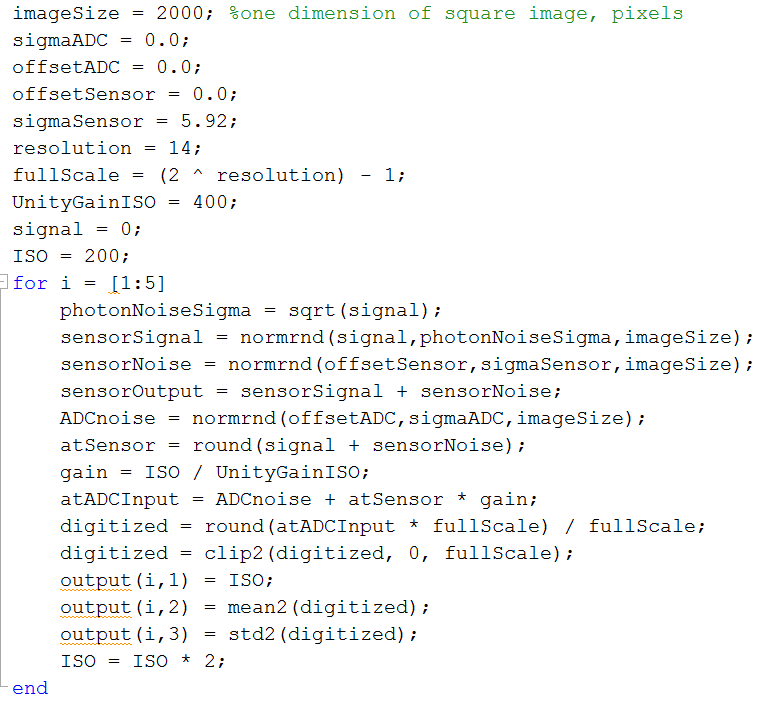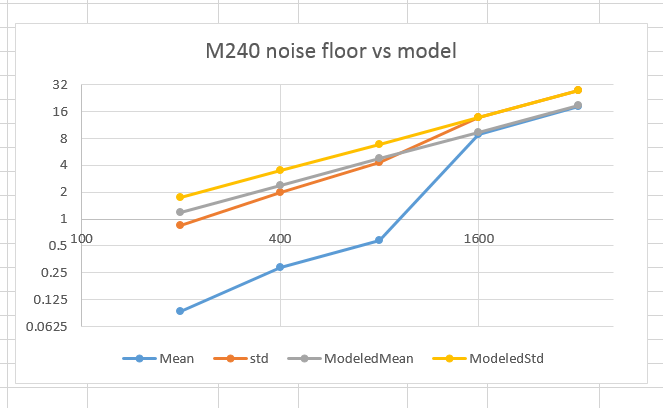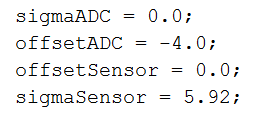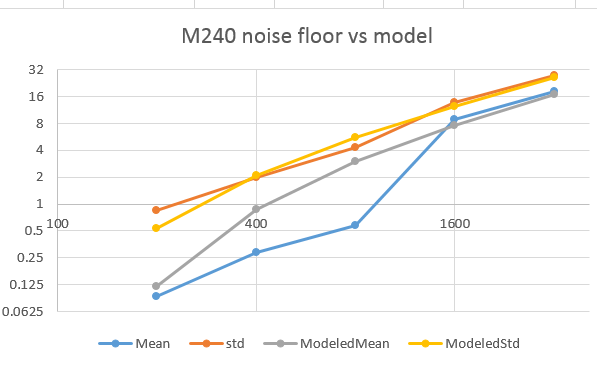I’ve noted before in this series of posts that the M240 has an unusually low noise floor at ISOs 200, 400, and 800, with ISOs 1600 and 3200 producing more reasonable values. Today I tried to do some modeling to figure out what was going on.
Here’s the program (in Matlab), with the values entered that I used for the first plot:
Noise can be introduced before and after the analog-to-digital converter. The two noise sources are assumed to be Gaussian and uncorrelated. There’s provision to include some light falling on the sensor, but I’ve not used it here.
Here’s the actual noise floor versus ISO setting plotted on the same grid as the results from the above model.
You can see that the very simple model of no post-gain noise and entirely unbiased Gaussian pre-gain noise matches the high ISO actual means and standard deviations. However, if you match the model results to the ISO 1600 and 3200 results from the camera, the ISO 200, 400, and 800 results are way off. Adding post-gain noise makes this worse.
Adding a four-LSB negative offset after the gain like this:
matches the observed standard deviation pretty well, but the means are off for ISOs 400 and 800:
I can’t find any combination of the model variables that gives a much better match to the actual mean values. Having the ADC noise at zero in the model is not realistic, but fiddling with that value, unlike with all the other cameras I’ve modeled, doesn’t seem to help with matching the actual performance.
It’s a mystery to me, at least for now. Leica wouldn’t crank in different offsets with different ISO settings, would they?




Leave a Reply